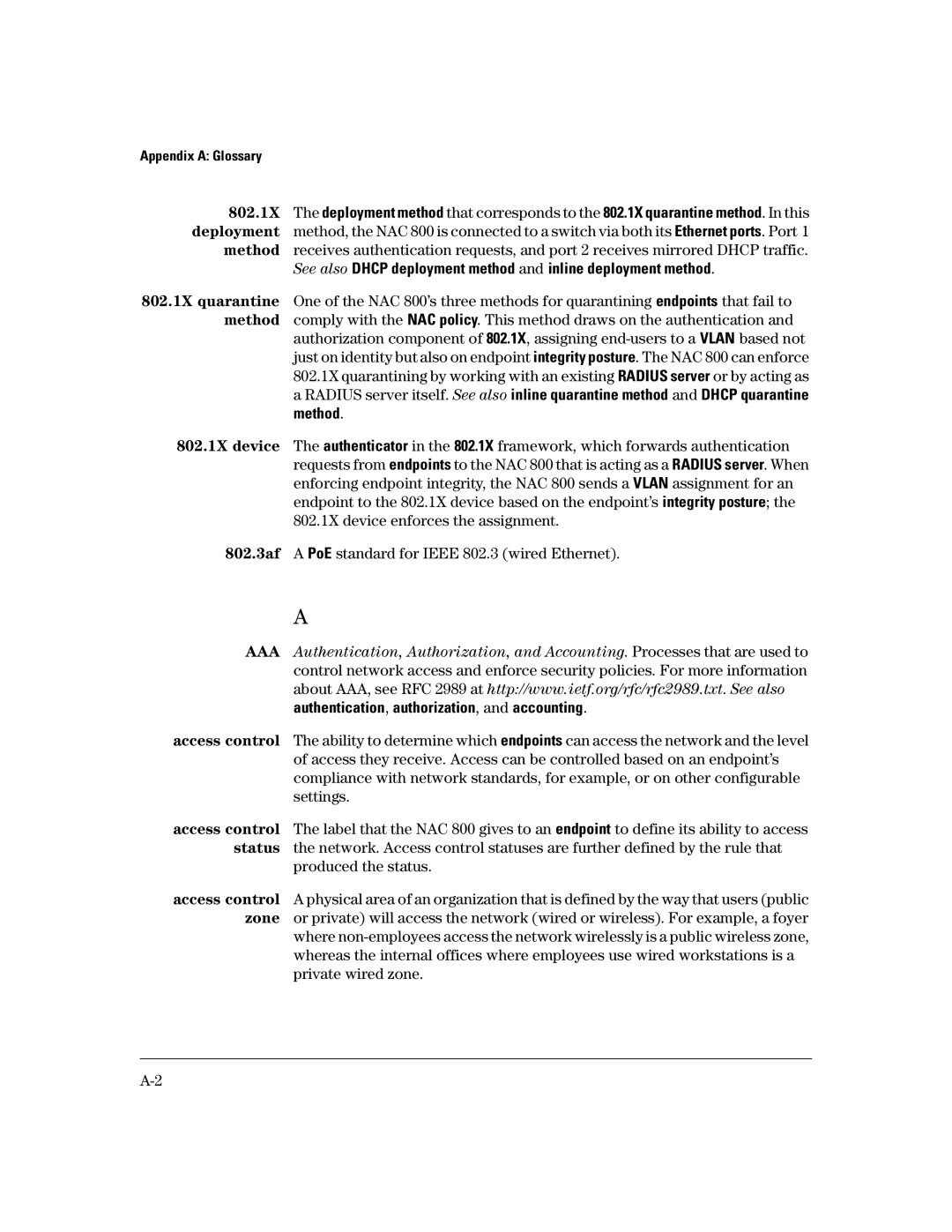Appendix A: Glossary
802.1X The deployment method that corresponds to the 802.1X quarantine method. In this deployment method, the NAC 800 is connected to a switch via both its Ethernet ports. Port 1 method receives authentication requests, and port 2 receives mirrored DHCP traffic.
See also DHCP deployment method and inline deployment method.
802.1X quarantine One of the NAC 800’s three methods for quarantining endpoints that fail to method comply with the NAC policy. This method draws on the authentication and
authorization component of 802.1X, assigning
802.1X device The authenticator in the 802.1X framework, which forwards authentication requests from endpoints to the NAC 800 that is acting as a RADIUS server. When enforcing endpoint integrity, the NAC 800 sends a VLAN assignment for an endpoint to the 802.1X device based on the endpoint’s integrity posture; the 802.1X device enforces the assignment.
802.3af A PoE standard for IEEE 802.3 (wired Ethernet).
A
AAAAuthentication, Authorization, and Accounting. Processes that are used to control network access and enforce security policies. For more information about AAA, see RFC 2989 at http://www.ietf.org/rfc/rfc2989.txt. See also authentication, authorization, and accounting.
access control The ability to determine which endpoints can access the network and the level of access they receive. Access can be controlled based on an endpoint’s compliance with network standards, for example, or on other configurable settings.
access control The label that the NAC 800 gives to an endpoint to define its ability to access status the network. Access control statuses are further defined by the rule that
produced the status.
access control A physical area of an organization that is defined by the way that users (public zone or private) will access the network (wired or wireless). For example, a foyer where
whereas the internal offices where employees use wired workstations is a private wired zone.
